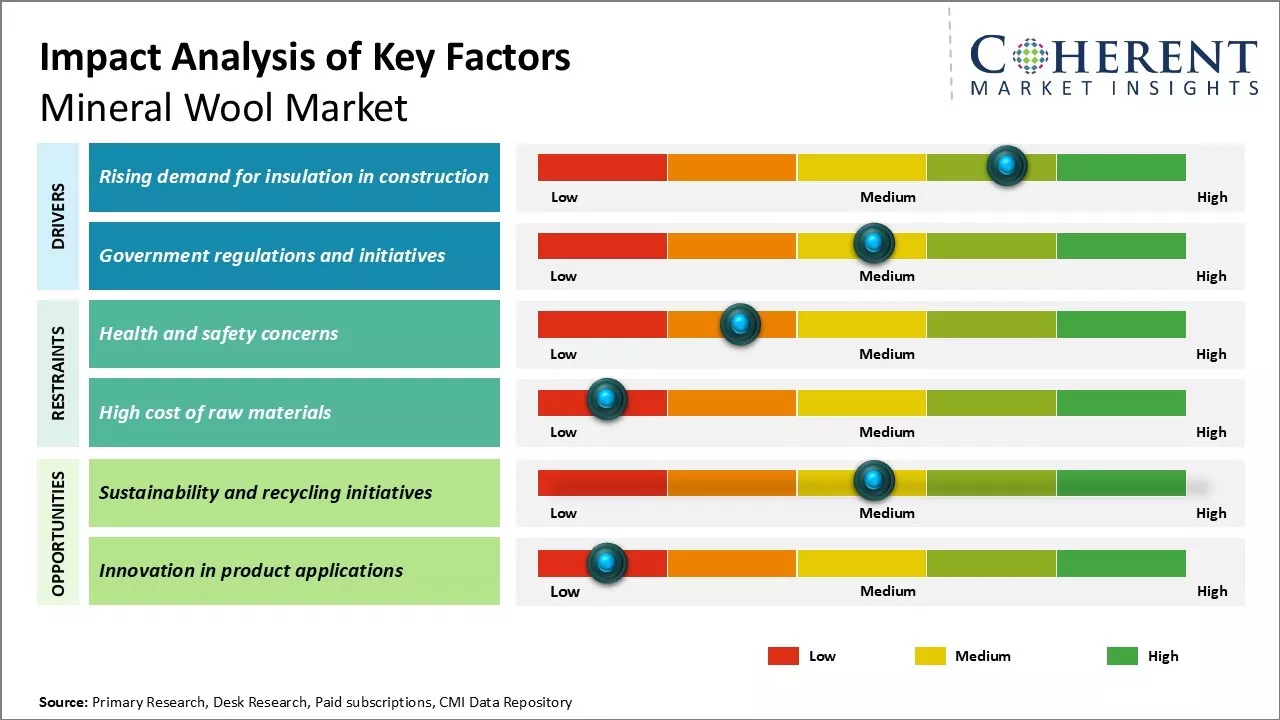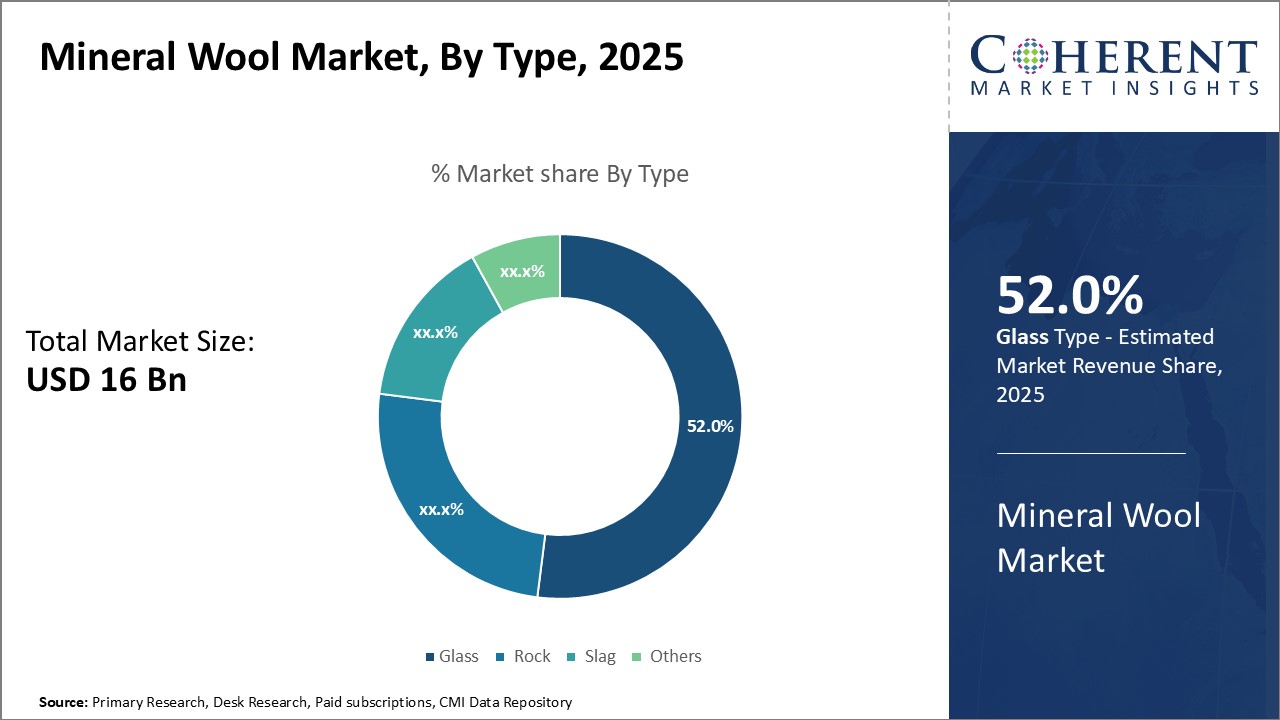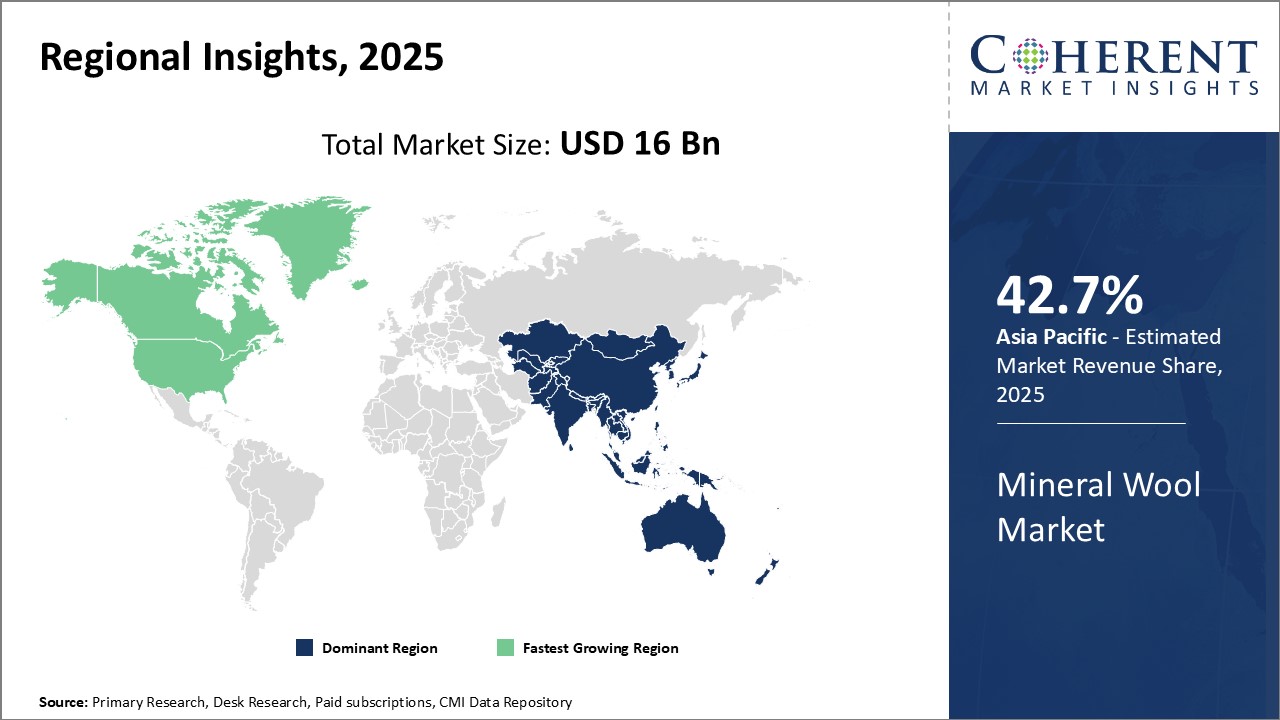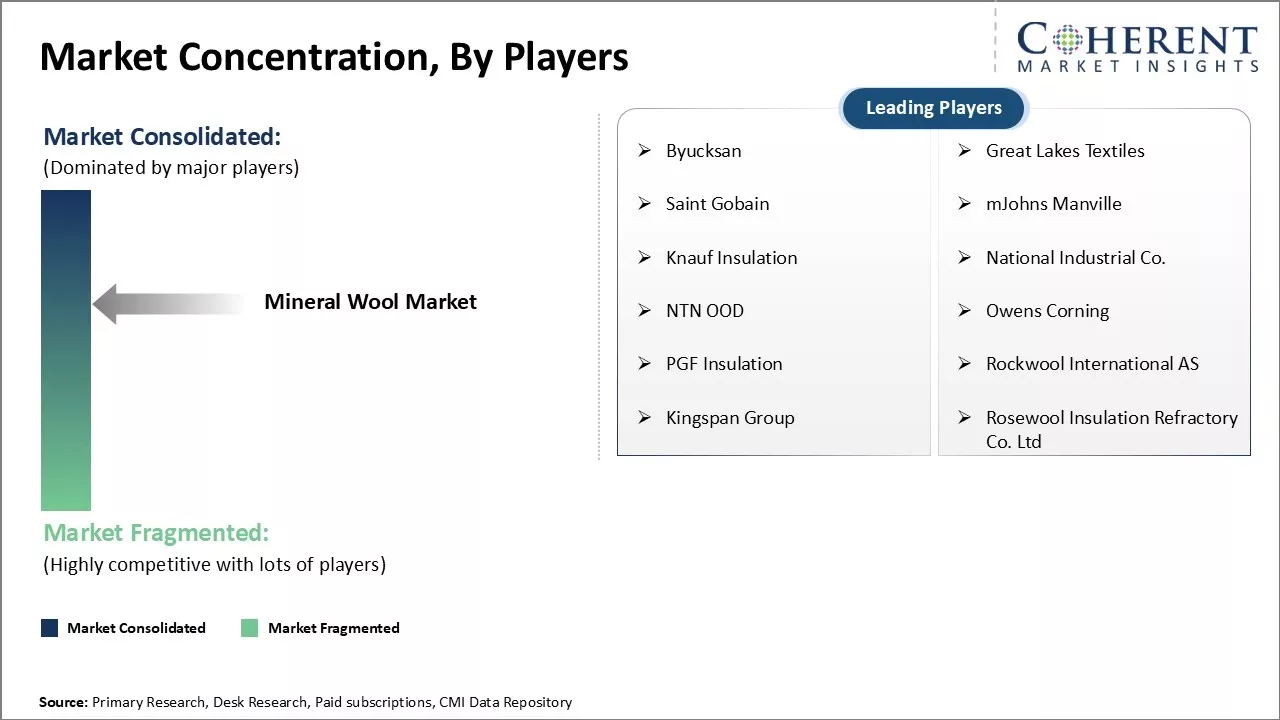The Mineral Wool Market is estimated to be valued at USD 16.00 Bn in 2025 and is expected to reach USD 22.68 Bn by 2032, exhibiting a compound annual growth rate (CAGR) of 5.1% from 2025 to 2032.

Discover market dynamics shaping the industry: Download Free Sample
Mineral wool acts as an excellent insulation material and has wide applications across various end-use industries such as building & construction, industrial, and transportation. Rising construction activities across residential and commercial sectors are expected to drive the market growth. Additionally, stringent regulations regarding energy efficiency in buildings are compelling builders to use highly efficient insulation materials like mineral wool. Growing industrialization and strong focus on minimizing carbon emissions are also augmenting mineral wool consumption.

Discover high revenue pocket segments and roadmap to it: Download Free Sample
Insights By Type: - Superior Insulating Properties Drives Glass’ Dominance
In terms of By Type, Glass segment is estimated to hold 52.0% share in 2025, owing to its superior insulating properties. Glass mineral wool offers exceptional thermal insulation along with good acoustic insulation. Glass mineral wool products are highly durable and resistant to fire, moisture and mold growth. Their inorganic composition means they do not decay or decompose like organic materials.
Insights By End-use Industry: - Extensive Use of Mineral Wool in Construction & Building Materials Boosts Segment Growth
In terms of By End-use Industry, Construction & Building Materials segment is estimated to hold 28.8% share in 2025, owing to the extensive use of mineral wool in commercial and residential construction projects. This makes them well-suited for ceilings, walls and partition boards. Mineral wool also significantly enhances the energy efficiency of buildings by reducing heat transfer. This has led to rising preference among builders and architects for well-insulated structures made from modern construction materials.

Need a Different Region or Segment? Download Free Sample
Regional Analysis: Mineral Wool Market
Dominating Region: Asia Pacific
Asia Pacific is expected to dominate the overall market in 2025 with an estimated share of 42.7%. Asia Pacific’s dominance in the mineral wool market can be attributed to the strong presence of manufacturing facilities and a robust insulation industry. Government policies promoting energy efficiency in buildings have propelled the demand for mineral wool insulation in the region.
Fastest-Growing Region: North America
North America region exhibits the fastest growth and is emerging as a major market. Factors such as rapid urbanization, industrialization, and infrastructure development are driving the need for insulation. Various tax incentives and subsidies for energy-efficient construction have encouraged mineral wool uptake.
Mineral Wool Market Outlook for Key Countries
Market Dynamics, Opportunities, and Challenges in a Cold Climate and Sustainable Building Landscape
Canada’s cold climate makes insulation critical, positioning mineral wool as a go-to solution in residential and commercial buildings. Increasing investments in sustainable building materials also support market demand. While demand is strong, Canada’s relatively small population size compared to the U.S. limits the overall market potential, and the presence of competing insulation materials can impact growth rates.
Government Initiatives, Urbanization, and Local Leaders Drive Growth in Energy-Efficient Insulation in China
China's mineral wool market growth is supported by the government's continued focus on building energy efficiency to tackle pollution. Local players like Huaao and Luyang have strengthened their position. China’s rapid urbanization and industrialization are major drivers of the market growth. With a focus on reducing air pollution and improving indoor air quality, the government is pushing for green building initiatives that align with mineral wool’s insulating properties.
Innovation, Stringent Standards, and Demand for Energy-Efficient Insulation in the U.S.
The U.S. continues to lead through product and process innovations from industry stalwarts Owens Corning and CertainTeed. The U.S. is benefiting from both residential and commercial construction, especially as insulation standards become more rigorous to improve energy efficiency. Mineral wool is a preferred insulation material due to its fire resistance, sound absorption, and thermal efficiency.
Growth Driven by Construction Boom, Energy Efficiency Goals, and Sustainable Building Initiatives in India
India's market is consolidating India’s booming construction sector and the push for energy-efficient infrastructure contribute to the market growth. The government’s focus on affordable housing and sustainable building practices also plays a role in increasing demand for mineral wool products.
Japan’s Market Expansion Fueled by Energy-Efficiency Regulations, Zero-Energy Building Trends, and Growing Renovation Demand
Japan’s mineral wool market growth is mainly driven by its stringent energy-efficiency regulations and the growing trend of zero-energy buildings (ZEB). Demand is particularly high in the residential sector, where thermal insulation is a priority. Japan’s aging population and renovation needs also support the market, with mineral wool commonly used for retrofitting older buildings to improve energy efficiency.

Get actionable strategies to beat competition: Download Free Sample
Top Strategies Followed by Mineral Wool Market Players
Emerging Startups in the Mineral Wool Market
Innovative Technologies:
Startups like Smartwool (U.S.) are developing smart mineral wool panels integrated with sensor technologies. The panels monitor parameters like temperature, moisture, and vibrations in real-time. Such insights help optimize operations in sectors like manufacturing, cold storage, and automotive. The widespread adoption of these smart products could transform data-driven decision making across multiple industries. SWI has developed super lightweight stone wool products that are easier to transport and install, lowering the overall energy costs associated with installation. They emphasize recyclable content and use advanced fiber-bonding technology.
Sustainable Solutions:
Greenwool (Finland) specializes in producing mineral wool using recycled industrial waste materials instead of conventional raw materials. Their eco-friendly production methods and waste-to-resource business model helps reduce landfill waste. If such initiatives gain traction, they could incentivize sustainability best practices across the mineral wool.
Key Takeaways from Analyst
Mineral Wool Market Report Coverage
| Report Coverage | Details | ||
|---|---|---|---|
| Base Year: | 2024 | Market Size in 2025: | USD 16.00 Bn |
| Historical Data for: | 2020 To 2024 | Forecast Period: | 2025 To 2032 |
| Forecast Period 2025 to 2032 CAGR: | 5.1% | 2032 Value Projection: | USD 22.68 Bn |
| Geographies covered: |
|
||
| Segments covered: |
|
||
| Companies covered: |
Byucksan, Great Lakes Textiles, Saint Gobain, mJohns Manville, Knauf Insulation, National Industrial Co., NTN OOD, Owens Corning, PGF Insulation, Rockwool International AS, Kingspan Group, and Rosewool Insulation Refractory Co. Ltd |
||
| Growth Drivers: |
|
||
| Restraints & Challenges: |
|
||
Uncover macros and micros vetted on 75+ parameters: Get instant access to report
Market Driver - Rising demand for insulation in construction
The global construction industry has seen tremendous growth over the past decade with the rapid urbanization and increasing spending power of middle-class households. With more buildings and infrastructure being constructed, the need for insulation has also gone up significantly. Mineral wool is one of the most widely used insulation materials in the construction sector due to its excellent heat and sound insulating properties along with fire resistance. it comes as a cost-effective solution for achieving higher energy efficiency standards in buildings.
Market Challenge - Health and safety concerns
One of the key challenges in the market is the health and safety concerns related to the production and usage of mineral wool insulation products. As mineral wool is manufactured using volcanic rocks at high temperatures, there are risks of fiber emissions during the manufacturing process if adequate safety measures are not taken. The tiny glass fibers released can also cause various respiratory issues if inhaled in large quantities over extended periods.
Market Opportunity-Sustainability and Recycling Initiatives
One of the key opportunities for the market lies in leveraging the sustainability and recycling potential of mineral wool insulation products. As mineral wool is manufactured from abundant and largely recycled material inputs, it is considered as one of the most environmentally friendly insulation materials. The producers are increasingly highlighting the reuse and recycling credentials of mineral wool to promote their products. Some manufacturers have also introduced take-back and recycling programs for used mineral wool to promote the circular economy.
Share
Share
About Author
Vidyesh Swar is a seasoned Consultant with a diverse background in market research and business consulting. With over 6 years of experience, Vidyesh has established a strong reputation for his proficiency in market estimations, supplier landscape analysis, and market share assessments for tailored research solution. Using his deep industry knowledge and analytical skills, he provides valuable insights and strategic recommendations, enabling clients to make informed decisions and navigate complex business landscapes.
Missing comfort of reading report in your local language? Find your preferred language :
Transform your Strategy with Exclusive Trending Reports :
Frequently Asked Questions
Joining thousands of companies around the world committed to making the Excellent Business Solutions.
View All Our Clients